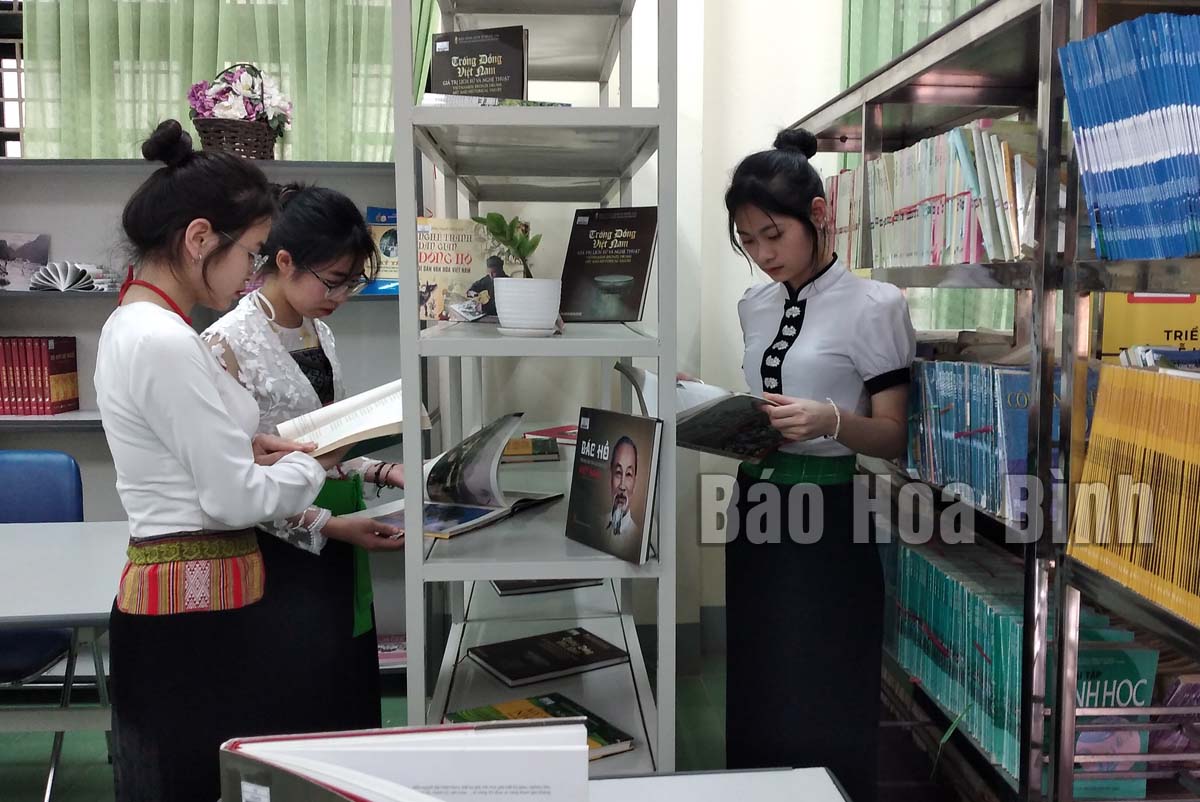
(HBO) – Many educational institutions in Hoa Binh province have organised practical activities to raise their students’ awareness of traditional culture, such as opening classes on Muong gongs, establishing clubs, and introducing folk games as extracurricular activities.
Students at the provincial boarding high school for
ethnic minorities are proud and confident wearing traditional dresses.
Since 2019, Quyet Thang High School in Lac Son
district has maintained a club to educate its students about preserving and
upholding Muong people’s traditional culture.
Dinh Thi Hao, Vice Principal of Quyet Thang High
School, said that since its establishment in October 2019, the 30-member club
has operated effectively and contributed significantly to improving the
school’s education quality comprehensively.
The boarding secondary and high school for
ethnic minorities in Cao Phong district has also focused on educating its
students about preserving traditional culture over the past years. During
extra-curricular activities and important events, its students wear their
traditional costumes. In particular, in October 2022, the school collaborated
with the district Office of Culture and Information in organising a class on
Muong gongs, with the participation of 50 students, and launched the Muong
Thang cultural preservation club.
According to leaders of the provincial
Department of Education and Training, such activities have contributed to
preserving and promoting traditional culture, helped young people understand
and love traditional cultural values, and created a healthy and friendly
learning environment, contributing to improving education quality in the
locality./.
The People’s Committee of Lac Son district held a ceremony on April 28 to receive the provincial relic certificate for the ancient rock carving site at Suoi Co stream, located in My Thanh commune.
A special music show titled "The country is in the fullness of joy” has been held at Hoa Binh Square in Hoa Binh city in celebration of the 50th anniversary of the liberation of the South and national reunification (April 30, 1975–2025).
The People's Committee of Lo Son commune, Tan Lac district, has organised the local annual traditional stream fishing festival on April 19 - 20.
As a land deeply intertwined with human history and Vietnam’s millennia-long journey of nation-building and defence, Hoa Binh is often revered for its epic tales and legends.
Residents of Hoa Binh boast a rich cultural identity, reflected in their unique language, traditional attire, customs, and folk melodies – described as "sweet as honey, clear as a mountain stream.”
Lac Son district’s Vu ban town held the 2025 Truong Kha temple festival on April 12–13 (the 15th–16th days of the third lunar month). Since its revival in 2019, the festival has been organised every three years, preserving valuable intangible heritage while meeting the community’s cultural and spiritual needs.



